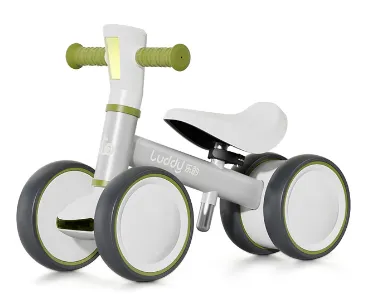
- Afrikaans
- Albanian
- Amharic
- Arabic
- Armenian
- Azerbaijani
- Basque
- Belarusian
- Bengali
- Bosnian
- Bulgarian
- Catalan
- Cebuano
- Corsican
- Croatian
- Czech
- Danish
- Dutch
- English
- Esperanto
- Estonian
- Finnish
- French
- Frisian
- Galician
- Georgian
- German
- Greek
- Gujarati
- Haitian Creole
- hausa
- hawaiian
- Hebrew
- Hindi
- Miao
- Hungarian
- Icelandic
- igbo
- Indonesian
- irish
- Italian
- Japanese
- Javanese
- Kannada
- kazakh
- Khmer
- Rwandese
- Korean
- Kurdish
- Kyrgyz
- Lao
- Latin
- Latvian
- Lithuanian
- Luxembourgish
- Macedonian
- Malgashi
- Malay
- Malayalam
- Maltese
- Maori
- Marathi
- Mongolian
- Myanmar
- Nepali
- Norwegian
- Norwegian
- Occitan
- Pashto
- Persian
- Polish
- Portuguese
- Punjabi
- Romanian
- Russian
- Samoan
- Scottish Gaelic
- Serbian
- Sesotho
- Shona
- Sindhi
- Sinhala
- Slovak
- Slovenian
- Somali
- Spanish
- Sundanese
- Swahili
- Swedish
- Tagalog
- Tajik
- Tamil
- Tatar
- Telugu
- Thai
- Turkish
- Turkmen
- Ukrainian
- Urdu
- Uighur
- Uzbek
- Vietnamese
- Welsh
- Bantu
- Yiddish
- Yoruba
- Zulu
Feb . 14, 2025 21:53 Back to list
27.5/29 "Color-Changing Carbon Fiber Mountain Bike 12 Variable Speed Mountain Bike Dirt Bike
Mountain biking is an exhilarating hobby that blends adventure with exercise, offering riders a front-row seat to the wilderness. However, achieving the ultimate riding experience hinges on selecting the correct mountain bike size. Correct bike sizing is not just a matter of comfort; it influences performance, safety, and overall enjoyment. Understanding the subtle nuances of mountain bike sizing empowers you to select a bike that aligns with your unique body metrics and intended riding style.
Suspension also plays a pivotal role in sizing. The type and amount of suspension impact both the bike's capability and its geometry. Heavily suspended bikes often have a different sizing structure compared to rigid frames. Riders interested in downhill biking may prioritize bikes with more suspension travel, which potentially alters traditional sizing norms. Conversely, cross-country bikers might look for lighter bikes with a more aggressive fit to optimize speed and agility. Before making a purchase, testing different bikes cannot be overstated. Spending adequate time in the saddle of potential options will reveal what feels inherently comfortable. Pay attention to how each size handles during turns, climbs, and descents. Some riders may prefer a shorter reach to facilitate quicker steering, while others may want a longer frame to enhance stability on high-speed descents. Brand influence also affects mountain bike sizing. Different manufacturers may interpret sizing charts diversely; hence, direct comparisons between brands can be misleading. This underscores the importance of consulting an expert or engaging in comprehensive research specific to the brand and model under consideration. Finally, understand that mountain bike sizing is a dynamic and personalized process. As your skill level improves, you might find that your sizing preferences evolve. Being open to periodic reassessment of your bike setup ensures that it continues to serve your needs as a rider, enhancing both enjoyment and performance. In conclusion, selecting the right mountain bike size is paramount to optimizing your biking ventures. By considering frame size, standover height, reach, handlebar positioning, and suspension, you forge a path toward a more controlled and exhilarating ride. Adequate research, expert consultations, and thorough test rides ensure that you find a bike that becomes an extension of yourself, allowing for unhindered exploration of nature’s trails.


Suspension also plays a pivotal role in sizing. The type and amount of suspension impact both the bike's capability and its geometry. Heavily suspended bikes often have a different sizing structure compared to rigid frames. Riders interested in downhill biking may prioritize bikes with more suspension travel, which potentially alters traditional sizing norms. Conversely, cross-country bikers might look for lighter bikes with a more aggressive fit to optimize speed and agility. Before making a purchase, testing different bikes cannot be overstated. Spending adequate time in the saddle of potential options will reveal what feels inherently comfortable. Pay attention to how each size handles during turns, climbs, and descents. Some riders may prefer a shorter reach to facilitate quicker steering, while others may want a longer frame to enhance stability on high-speed descents. Brand influence also affects mountain bike sizing. Different manufacturers may interpret sizing charts diversely; hence, direct comparisons between brands can be misleading. This underscores the importance of consulting an expert or engaging in comprehensive research specific to the brand and model under consideration. Finally, understand that mountain bike sizing is a dynamic and personalized process. As your skill level improves, you might find that your sizing preferences evolve. Being open to periodic reassessment of your bike setup ensures that it continues to serve your needs as a rider, enhancing both enjoyment and performance. In conclusion, selecting the right mountain bike size is paramount to optimizing your biking ventures. By considering frame size, standover height, reach, handlebar positioning, and suspension, you forge a path toward a more controlled and exhilarating ride. Adequate research, expert consultations, and thorough test rides ensure that you find a bike that becomes an extension of yourself, allowing for unhindered exploration of nature’s trails.
Next:
Latest news
-
The Ultimate Kids' Four-Wheeler Experience
NewsJul.09,2025
-
The Ultimate Guide to Mountain Bikes: Gear Up for Your Ride
NewsJul.09,2025
-
The New Age of Cycling: Electric Bikes for Every Rider
NewsJul.09,2025
-
The Best Kids Bicycles: Ride in Style and Safety
NewsJul.09,2025
-
The Best 3-Wheel Scooters for Kids: Fun, Safety, and Adventure
NewsJul.09,2025
-
Revolutionize Your Ride: Affordable Electric Bikes
NewsJul.09,2025
-
Finding the Perfect Mountain Bike for Every Rider
NewsJul.09,2025



